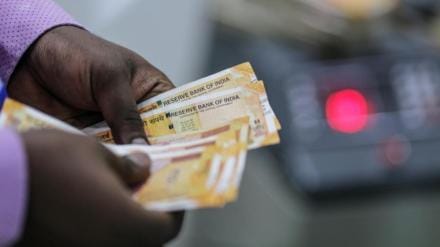By Ajay Sahai,
Recently, US presidential candidate Donald Trump said, if elected, he would impose 100% tariffs on imports from countries which shun the dollar. India came out with the rupee settlement mechanism for trade in 2022. Ajay Sahai explains how this works for the benefit of exporters and importers.
l How does the rupee settlement of trade work?
THE RUPEE SETTLEMENT mechanism is a multifaceted strategy that provides better market accessibility in countries having scarce foreign exchange or those facing some sanction. By invoicing and settling trades in rupees, Indian exporters can potentially shield themselves from exchange rate fluctuations that can impact their profitability. Over time, the increased use of the rupee in international trade can contribute to its acceptance as a global currency.
The settlement through Indian rupee is an additional arrangement to the existing system that uses freely convertible currencies and will work as a complimentary system. This will reduce dependence on hard (freely convertible) currency.
As the trade transactions will be settled in rupee, it will reduce the exchange rate risk for the Indian exporters and importers. If an Indian exporter or importer has finalised the contract, say, for Rs 10 lakh and Rs 50 lakh, he will get or pay the exact amount in rupee and thus will be completely insulated from fluctuations in currency exchange rates.
l How many countries have accepted this arrangement?
THE FRAMEWORK PUT in place by the Reserve Bank of India (RBI) is applicable for any country seeking to undertake trade with India in the rupee as per RBI’s July 11, 2022 circular. Over 22 countries including Belarus, Bangladesh, Botswana, Fiji, Germany, Guyana, Israel, Kazakhstan, Kenya, the Maldives, Malaysia, Mauritius, Russia, Myanmar, Oman, Seychelles, New Zealand, Singapore, Sri Lanka, Tanzania, Uganda and the United Kingdom have worked out such arrangements by establishing a Special Rupee Vostro Account (SRVA) with Indian banks. The mechanism is operational with Russia, Sri Lanka and Maldives. More countries are expected to finalise such arrangements over a period of time.
l Can rupee payments get export benefits?
CHANGES HAVE BEEN made in the Foreign Trade Policy, for grant of export benefits as well as fulfilment of export obligation, for export realisations in the rupee as per the RBI guidelines. Thus all export benefits are given to exports made in rupee through the SRVA.
However, not many exports are happening under the rupee settlement yet. First, those taking foreign currency credit for imports are required to liquidate it through exports earnings in foreign currency to have natural hedging and thus invoice in foreign currency. Secondly, the forward premium in many foreign currencies gives additional benefits to exporters. Thirdly, being an optional mechanism both buyer and sellers have to give their consent for it. While the exports are increasing, it it will take a few years to exploit its full potential.
l What if a direct exchange rate is not present?
THE EXCHANGE RATE for most currencies is determined in the forex markets. In the initial phase, if there is no market with direct exchange rates between two currencies (say, Indian rupee and Russian ruble), the exchange rate between the currencies of the two trading countries, each of which has markets against global currencies, would be derived as a cross currency rate.
l How can overseas suppliers use the surplus in SRVA?
THE RUPEE SURPLUS balance lying in an SRVA of the overseas supplier on exporting to India may be used for permissible capital and current account transactions. The balance can be used for: (a) Payments for projects and investments;
(b) Export/Import advance flow management; (c) Investment in government treasury bills, government securities, etc.
l Rupee vs local currency settlement
THE PRIMARY DIFFERENCE is the currency used for payment. In rupee settlement, the Indian rupee is used while in local currency settlement the seller’s country’s currency is used. Thus, in rupee settlement, both Indian exporters and importers are saved from exchange risk. In local currency settlement, Indian exporters are saved from exchange risk but Indian importers will have to bear any potential risks.
The writer is the director-general and CEO of Federation of Indian Export Organisations.
